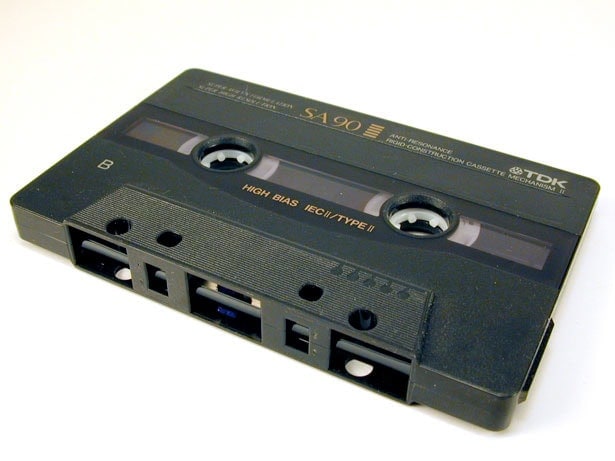Most of the technologies that we have used in the past have been eclipsed by the remarkable technology that we use today.
Advances in their design have occurred in tandem with the advances in technology in this digital era, with many large products being redesigned and miniaturized into amazingly small sizes.
While we may laugh at the fact that anyone ever found this technology to be cutting-edge, we can’t discount its place in history as a forerunner for all of the technology that wouldn’t exist today without its dinosaur ancestry.
Here is a quick look through history at vintage technologies that we no longer use.
1. “Super 8/8mm” Handheld Video Cameras
Kodak invented the Super 8/8mm film format in 1965. Soon after, handheld film cameras flooded the market and the living rooms of people everywhere were filled with families watching the hi-jinks at Freddie’s sixth birthday party.
2. Betamax
Betamax was developed by Sony in 1975, a year before the ultimately more popular VHS format was invented as a response to Sony’s attempt to control the format of the industry.
3. VHS Format
Invented by JVC, VHS was the predominant video format by the 1980’s, despite what some argued was the technical superiority of the Betamax format.
4. Laser Disc Players
Initially marketed as “Discovision”, laser discs were the format choice of tech enthusiasts who had the money to put together a collection until the DVD format came out.
5. Phonograph
The phonograph, or gramophone, was invented by Thomas Edison in 1877 and was on the mass market by the turn of the century. The gramophone was replaced by the considerably less bulky record player in the latter half of the twentieth century.
6. Turntables
Record players are still in use in DJ booths, recording studios, and radio stations all over the world.
7. HAM Radio
An estimated six million people are still involved with this hobby that began at the start of the 20th century. HAM radio operators communicate with each other over short wave radio. HAM radios have been featured in many popular movies, including The Shining and Contact.
8. Reel to Reel
The first tape recorders were reel to reel and were the preferred technology for professional sound designers until digital formats rendered them obsolete.
9. Cassette Tape Recorders
These devices were considerably less bulky then their reel to reel ancestors, and were used mostly for transcription.
10. Transistor Radios
Transistor radios typically only picked up on the AM band and were a ubiquitous sight in schools and businesses in the seventies.
11. Cassette Tapes
The compact cassette was originally developed for transcription purposes, and its users quickly realized that they could use it to record music and make “mixed tapes”.
12. Boom Boxes
Associated with hip hop, break-dancing, and other aspects of eighties culture, the boom box was introduced in the late 1970’s as portable, all-in-one music devices. Earlier models took huge quantities of batteries and were very heavy.
13. Telegraph
The telegraph was the precursor to telex and fax machines. Used by shipping operators and for military uses, the telegraph required a skilled operator to transmit and receive messages.
14. Telex Machines
These machines used radio and/or microwaves to transmit information over the airwaves. Variations of them are still in use today for communications by the hearing impaired.
15. Wang Calculators
No, we didn’t pick that just for the headline. In the seventies, Wang manufactured mini-computers that were a cut above your standard accounting computer, with exciting features like a FORTRAN IV compiler.
16. Analog Telephones
While exactly who invented the phone is a topic of debate, the first patent was awarded to Alexander Graham Bell in 1876. They have evolved from rotary dial models to smart phones that we can use today to surf the internet.
17. PDA’s
Considered one of the biggest tech flops of all time, the Apple Newton was sold at a huge price point compared to other Personal Digital Assistants (PDA) that were on the market. Personal digital assistants were electronic timekeepers for the times when you couldn’t fit a computer in your pocket. The Newton’s development laid the groundwork for Apple’s hugely successful iPod and iPhone. Who’s laughing now?
18. Portable Televisions
Portable televisions, such as Sony’s Watchman, were an idea that came a little before the ability of the media to catch up to it. With a limited selection of channels, they never really caught on.
19. Walkman
The Walkman was invented for the co-chairman of Sony, Akio Morita, who wanted to be able to listen to his favorite operas on plane trips. It was initially marketed as the Soundabout in North America, but the “Walkman” name was used for the product up until the present day.
20. Discman
21. Pagers
22. LED Watch
The watch pictured is the Pulsar, the first LED watch. The watch’s designer was inspired by the film 2001: A Space Odyssey, having worked on the timepiece props for the movie.
23. TV Watch
24. Seiko Wrist Computer
The smartphone of 1984: this took the idea of the “computer watch” to a whole new level. Think this is too much? Consider the nuclear watch, whose invention was rumoured in this Time magazine article. Be very glad that never happened.
25. Calculator Watches
26. CRT Monitor
27. Massive Mainframes
28. Typewriters
29. Dial-Up Modems
30. Zip Drive
This short-lived technology was the bridge between 3.5″ Floppy Disc and CD storage.
31. Slide Projectors
32. 8″ Floppy Disc
33. 3.5″ Floppy Disc
34. Polaroid Cameras
35. Home Movie Projectors
36. Vinyl Records
37. CRT Television
38. Tape Drives
39. 8 Track
